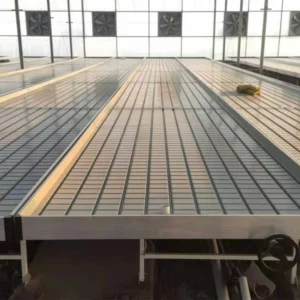Soil conditioners play a crucial role in improving soil structure by enhancing its physical, chemical, and biological properties.
Here are several ways in which soil conditioners contribute to improved soil structure:
- Increased Soil Aeration: Soil conditioners, such as organic matter or amendments like gypsum, can improve soil aeration. This allows for better oxygen exchange between soil and plant roots, promoting the growth of aerobic microorganisms and root development.
- Enhanced Water Retention: Soil conditioners can improve the water-holding capacity of the soil. This is particularly beneficial in sandy soils that drain quickly. By retaining more water, the soil becomes more resilient during dry periods, providing a consistent water supply to plants.
- Promotion of Microbial Activity: Organic soil conditioners introduce beneficial microorganisms to the soil. These microbes contribute to the breakdown of organic matter, releasing nutrients for plant uptake. They also help create stable soil aggregates, improving structure.
- Prevention of Soil Erosion: Soil conditioners can reduce soil erosion by improving the binding of soil particles. This is crucial for preventing water runoff and maintaining the integrity of the soil structure, especially on sloping terrain.
- Formation of Soil Aggregates: Soil conditioners contribute to the formation of soil aggregates, which are clusters of soil particles held together by organic matter and microbial activity. China Agricultural Equipment suppliers Aggregates create pore spaces in the soil, improving drainage, root penetration, and nutrient movement.
- pH Adjustment: Some soil conditioners can help in adjusting soil pH. Correcting pH levels is essential for optimal nutrient availability to plants. For instance, lime is a common soil conditioner used to raise pH in acidic soils.
- Reduced Soil Compaction: Soil compaction can limit root growth and water movement in the soil. Soil conditioners, especially those with properties like humic acids, can alleviate compaction by improving soil structure and reducing surface tension.
- Improved Nutrient Retention: Soil conditioners enhance the cation exchange capacity (CEC) of the soil. This allows the soil to retain more essential nutrients, making them available to plants over an extended period.
- Better Root Penetration: Improved soil structure facilitates easier root penetration and expansion. This, in turn, enhances the plants’ ability to access water and nutrients from the soil, promoting overall growth and development.
- Resistance to Soil Crusting: Soil conditioners can help prevent the formation of crusts on the soil surface. Crusting can inhibit water infiltration and seedling emergence, and soil conditioners contribute to maintaining a friable and loose soil structure.
In summary, soil conditioners act as amendments that address various soil problems, leading to improved soil structure. They create a more favorable environment for plant growth by enhancing water retention, aeration, microbial activity, and nutrient availability.
